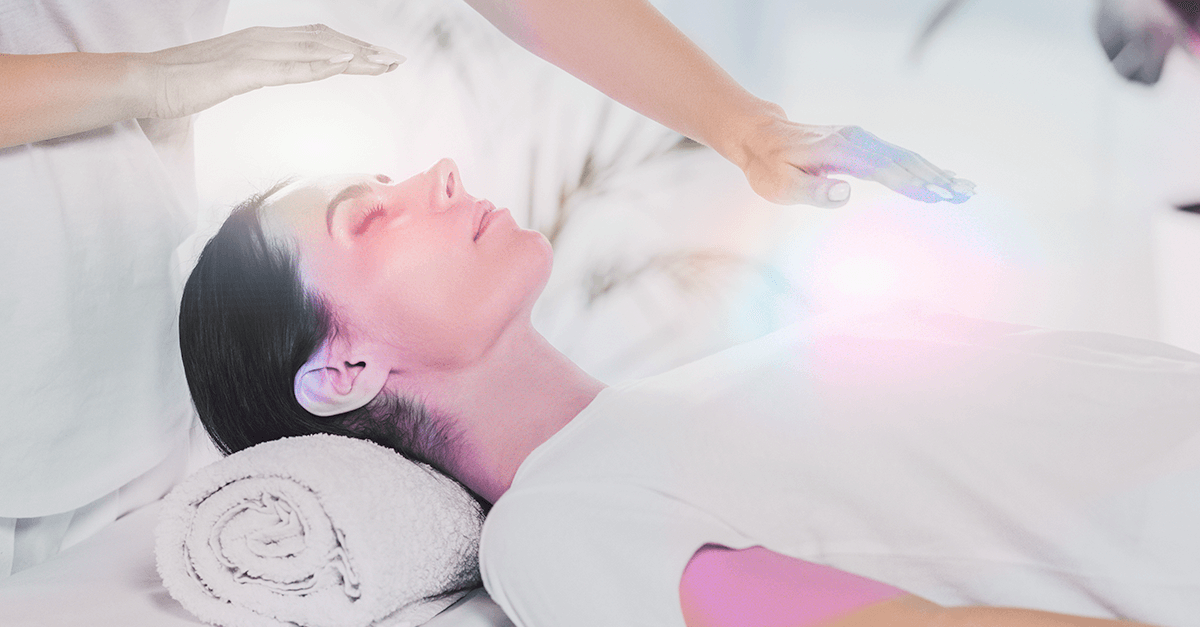Becoming a Certified Reiki Practitioner | Embrace the Love that is Reiki
Embarking on your Reiki healing journey as a Certified Reiki Practitioner involves a transformative process, notably referred to as an ‘attunement.’ Administered under the careful guidance of a Reiki Master, attunements are a key part of your progression through various stages of learning. These stages are methodically structured to ensure your gradual and thorough understanding of this healing art.
Your journey begins with acquiring a robust understanding of Reiki fundamentals, its origins, principles, and techniques. This foundational knowledge paves the way for more advanced learning. From becoming adept at hands-on healing and self-healing to understanding sacred Reiki symbols and distant healing techniques, your skills grow with each level. The ultimate attainment is reaching the Master Level or the Master Teacher Level, where you don the mantle of a guide, ready to help others on their own Reiki journeys. With consistent practice, ethical conduct, and a commitment to learning, the world of Reiki healing opens its doors to you, promising a transformative experience.
Reiki Basics: Unfolding the Healing Power Within
Embarking on your Reiki journey commences with understanding its fundamental concepts, a fascinating exploration into an ancient healing practice that combines spiritual growth and holistic well-being. Here’s how you can dive deep into the basics of Reiki.

Understanding the Term ‘Reiki’
Reiki, a word derived from the Japanese language, combines ‘Rei,’ denoting universal or spiritual, and ‘Ki,’ which means life force energy. Together, ‘Reiki’ translates to ‘universally guided life force energy.’ It’s this energy that Reiki practitioners channel to promote healing and balance.
Life Force Energy and Chakras
At the heart of Reiki is the concept of ‘Ki’ or ‘life force energy.’ It’s believed that a healthy, free-flowing ‘Ki’ contributes to overall well-being, whereas disruptions or blocks lead to health issues.
This ‘Ki’ is thought to flow through specific energy centers or ‘Chakras’ within the body. There are seven primary chakras, each linked to specific physical, emotional, and spiritual facets of our being. Reiki healing often involves working with these chakras, re-balancing them, and ensuring a smooth flow of ‘Ki.’
The Five Reiki Principles
Another fundamental aspect of Reiki is the Five Reiki Principles or precepts, a set of spiritual guidelines provided by Reiki’s founder, Mikao Usui. These principles, starting with ‘Just for today’, guide us towards anger and worry-free living, cultivating gratitude, diligent work, and kindness towards all beings. Integrating these principles into daily life forms an integral part of Reiki practice.
The Healing Power of Reiki
Reiki is essentially a healing practice. This healing can manifest on multiple levels – physical, emotional, mental, and spiritual. Whether it’s stress relief, emotional balance, spiritual growth, or assisting with physical ailments, Reiki has a broad application scope. It can work stand-alone or complement other medical treatments, offering side-effect-free support.
Remember, the beauty of Reiki lies in its simplicity and accessibility. It doesn’t necessitate any specific religious belief or inherent healing abilities. All it calls for is a sincere intention to foster well-being – your own and others.
At MAD REIKI, we provide comprehensive Reiki training that takes you beyond the surface, unraveling the profound depths of this healing art. Join us, and let’s explore the transformative world of Reiki together.
Finding Your Reiki Master
Seek out a Reiki Master who can provide comprehensive training and attunements. Ensure you choose a master who resonates with your ethos and shares your vision for healing and well-being.
Advancing Through Reiki Levels: A Closer Look at Your Reiki Journey
The journey through Reiki is often categorized into distinct levels or degrees, each offering a deeper understanding of energy healing and unique techniques. Here’s an in-depth overview of the progression through Reiki levels:

Reiki Level 1 (Reiki I): The Foundation
Reiki Level 1 serves as your introduction to the mystical world of energy healing. Here, you’ll get a solid grounding in the basics of Reiki, its historical roots, and the philosophical framework guiding its practice.
Your training at this level focuses on learning how to channel the healing energy within yourself and others through hands-on healing. This stage emphasizes self-healing, encouraging you to experience the Reiki energy firsthand, promoting personal growth, self-awareness, and self-purification.
Reiki Level 2 (Reiki II): Expanding the Horizons
As you ascend to Reiki Level 2, you’ll delve deeper into the subtle energies. This stage introduces you to the sacred Reiki symbols – tools that amplify the healing process and focus the energy more precisely on different levels of being.
A significant highlight of this level is learning distant or remote healing, a technique allowing you to send healing energy across space and time. This powerful practice enables you to extend your healing abilities beyond physical boundaries, offering support to individuals anywhere in the world.
Reiki Level 3 (Reiki III or Master Level): Achieving Mastery
The Master Level, often considered the pinnacle of Reiki training, deepens your understanding of energy healing. This advanced level introduces you to the Master Symbol, one of the highest vibrations of energy in Reiki practice, and offers advanced techniques for healing and energy enhancement.
Reiki Level 3 training encourages introspection and spiritual growth, fostering a deeper connection with the universal life force. Although it designates you as a Reiki Master, it also symbolizes mastery over self, a significant milestone in your spiritual journey.
Reiki Master Teacher Level: Embracing the Teacher Within
Certain Reiki traditions recognize an additional step – the Master Teacher Level. This stage equips you with the knowledge and skills to pass on the Reiki legacy to others. You learn how to teach Reiki and perform attunements, enabling others to tap into the Reiki energy.
Becoming a Reiki Master Teacher signifies a commitment to the Reiki path, requiring dedication, spiritual maturity, and a genuine desire to assist others in their healing journey. It’s a step towards becoming a beacon of healing light, empowering others with the gift of Reiki.
Remember, each level of Reiki training offers its unique gifts and insights, fostering personal growth and transformation at every step. At MAD REIKI, we ensure a comprehensive and immersive learning experience, guiding you at each step of your Reiki journey.
Experiencing Attunements: An Energy Awakening
Experiencing attunements is a quintessential part of Reiki training. During each level of training, your Reiki Master will conduct an attunement ceremony – a spiritual ritual designed to open your energy channels or chakras.

These attunements are a type of energy transmission or initiation, where the Reiki Master uses specific symbols and gestures to guide universal life force energy, or ‘ki’, to the student. This energy, guided by the highest spiritual consciousness, purifies, aligns, and awakens the student’s energy system, enabling them to channel Reiki healing energy effectively.
Attunements often facilitate personal growth and spiritual development, apart from enabling the healing capability. It’s common for students to experience shifts in consciousness, heightened intuition, or emotional releases during and after attunements. Each person’s attunement experience is unique, reflecting their individual spiritual journey and healing needs.
Regular Consistent Reiki Practice: The Path to Mastery
Consistent practice is the cornerstone to becoming a proficient Reiki practitioner. Post each attunement; it’s important to engage regularly with Reiki, applying it as a holistic wellness tool.
Reiki self-treatment should be your first focus, which involves channeling Reiki energy to heal and balance your energy system. Regular self-treatments not only promote personal health and well-being but also deepen your connection with Reiki energy. This familiarity and the resultant intuition are invaluable when you start offering Reiki treatments to others.

In addition to self-treatment, apply Reiki healing to others, be it family, friends, or voluntary clients, to further refine your skills. Remember, Reiki healing isn’t about directing your personal energy to instigate healing but acting as a conduit for the universal life force energy.
Consistent practice also involves meditating with Reiki symbols and practicing the Five Reiki Principles or precepts – guidelines for healthy living and spiritual growth outlined by Reiki’s founder, Mikao Usui.
Remember, practicing Reiki isn’t merely about technique; it’s about cultivating a way of life that promotes balance, harmony, and spiritual growth. As you continue to practice, you’ll likely find Reiki’s healing presence seeping into all aspects of your life, providing new insights, fostering growth, and promoting an overall sense of well-being.
Reiki Ethics | Maintaining Ethical Conduct
As a Reiki practitioner, it’s paramount to adhere to ethical guidelines, show respect toward all clients, and uphold professional boundaries.
Remember, each individual’s journey to becoming a Reiki practitioner is unique, and the time required to advance through each level varies. It’s important to follow a path and pace that aligns with your personal comfort and readiness.
While Reiki doesn’t necessitate licensure like traditional massage therapy, organizations like The Reiki Licensing Commission for Reiki Masters and Healers (RLCRMH) uphold standards for Reiki practice and provide certifications for various Reiki modalities, including Lightarian Reiki®, Urevia®, Shamballa Multi-Dimensional Reiki healing, and Karuna.
Certain Reiki masters adhere to unique Reiki forms with specific standards. For instance, to practice Usui Reiki, you must train under a teacher who traces their lineage to Dr. Usui or his Hawaiian master’s student, Hawayo Takata.
With MAD REIKI, you’re stepping towards becoming a certified Reiki practitioner. Our Reiki Training & Classes are designed to guide and support you on this transformative journey. Dive into the world of Reiki with us, and let’s unlock the doors to holistic health and inner peace together.


Leave a Reply